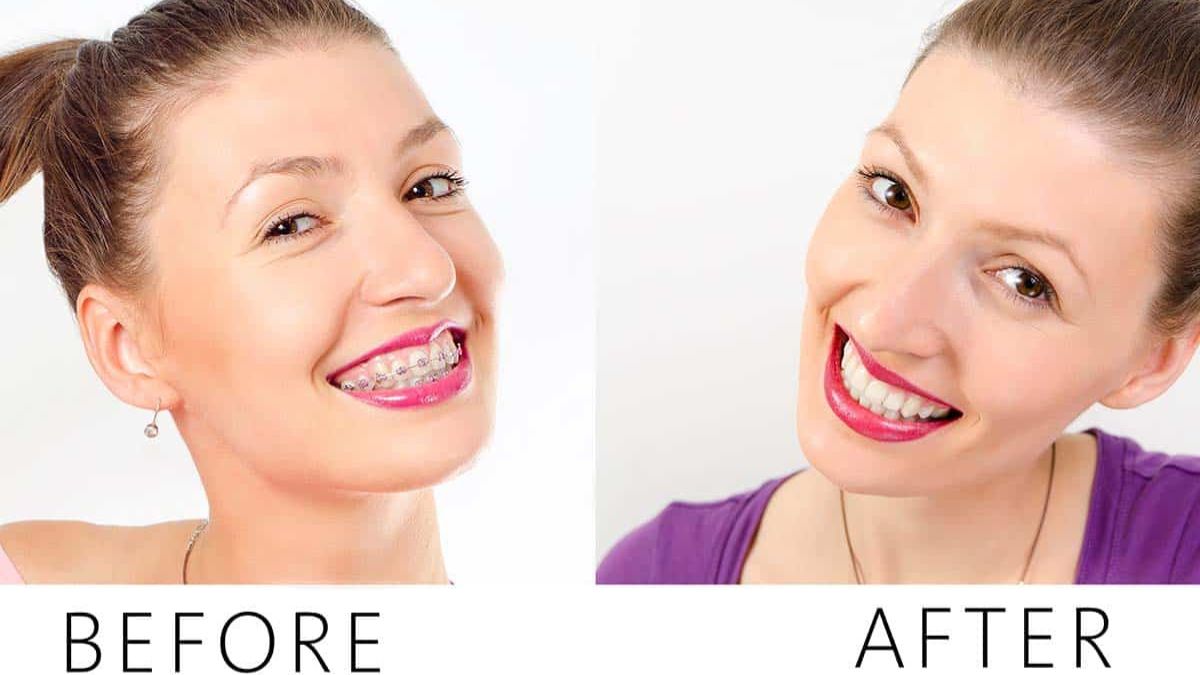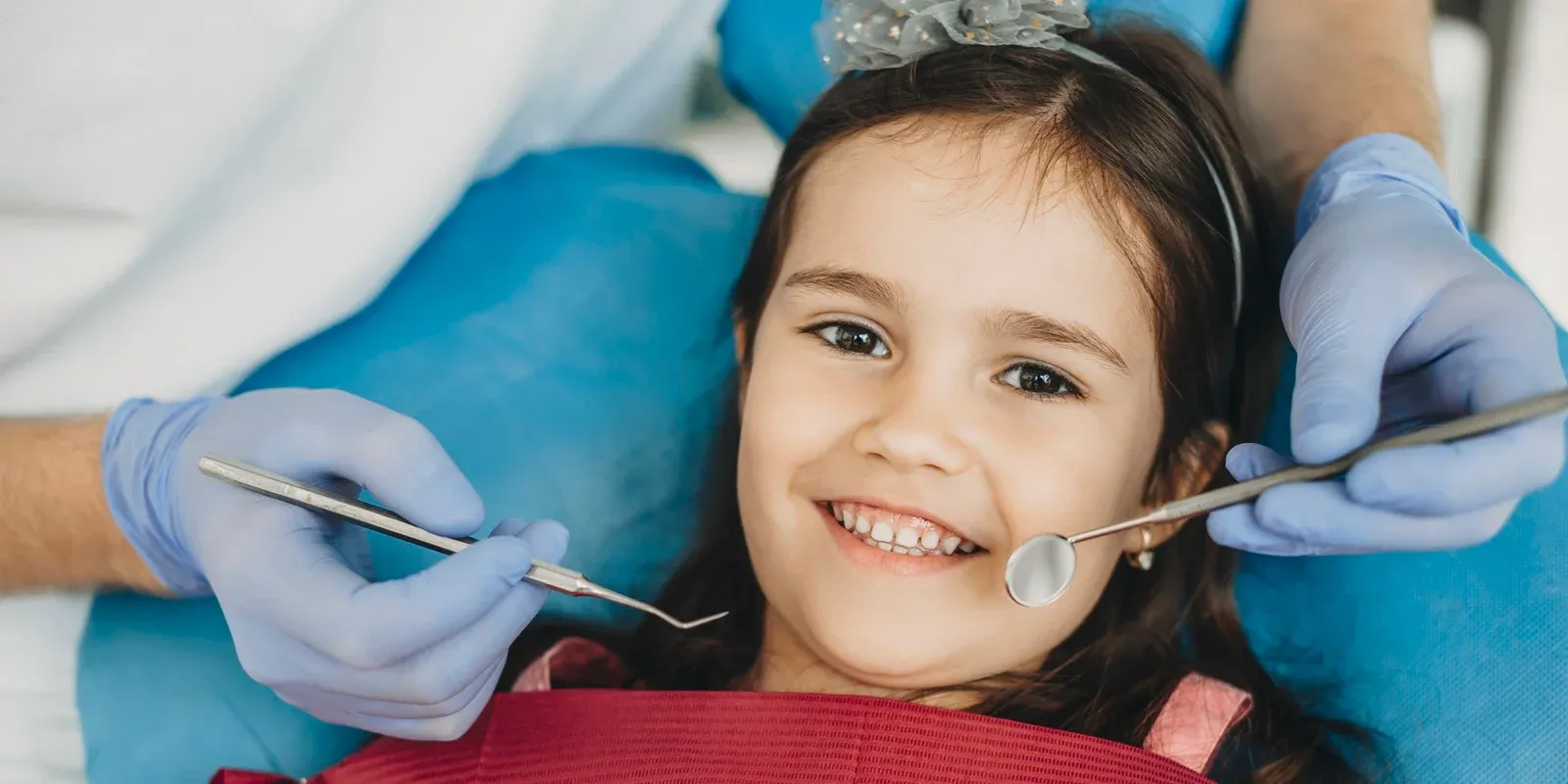HEALTH
The Road to a Perfect Smile: Types and Benefits of Modern Braces

Achieving that perfect smile is a dream shared by many. When it comes to teeth straightening, there are myriad innovative orthodontic solutions available today. These modern braces enhance your appearance and contribute significantly to improved dental health by aligning teeth correctly. Selecting the right type of braces hinges on a variety of factors, such as personal preferences, dental needs, and budgetary constraints. Each option offers diverse benefits that cater to different lifestyle and orthodontic requirements.
Traditional Metal Braces: A Classic Solution
Metal braces have been a fundamental part of orthodontic treatment for decades, and their longevity in practice testifies to their effectiveness. These braces, which are made of premium stainless steel, correct teeth over time using a mix of wires and brackets. They’re particularly effective in addressing severe dental misalignments and intricate malocclusions, making them a staple for many orthodontists, including a trusted orthodontist in Bellefontaine, OH, when tackling complex dental issues.
Orthodontists in Bellefontaine, OH, deliver exceptional care to patients looking to enhance their smiles and dental health. They offer a variety of services, such as braces, clear aligners, and other customized orthodontic treatments tailored to each patient’s needs. By focusing on personalized treatment plans and maintaining a welcoming environment, they strive to help every patient achieve optimal results.
Ceramic Braces: A Blend of Function and Aesthetics
Ceramic braces offer an aesthetic alternative to metal braces, appealing particularly to those who wish to maintain a more natural look during orthodontic treatment. Typically made from clear or tooth-colored materials, ceramic braces blend in with natural teeth and are less noticeable when smiling. Ceramic braces work in much the same way as metal ones, effectively repositioning teeth over time. While the cost is slightly higher due to the materials and more intricate manufacturing processes involved, the visual appeal often outweighs this drawback. For adults, in particular, who might feel self-conscious about wearing traditional braces, the subtlety of ceramic braces provides a compelling option.
Lingual Braces: Hidden and Effective
Lingual braces provide a unique approach by addressing the need for discretion in orthodontic treatments. These braces are affixed to the back surfaces of the teeth, rendering them invisible from the front. While lingual braces offer the same corrective functions as traditional metal braces, the positioning requires specialized expertise for installation. The treatment process can be slightly more challenging but offers the benefit of privacy, allowing wearers to straighten their teeth discreetly. This option is particularly suitable for adults or teens conscious of the aesthetic impact of traditional braces. A detailed exploration of undetectable braces discusses their benefits and techniques.
Self-Ligating Braces: Efficiency and Comfort
Self-ligating braces represent a modern evolution in orthodontics. They enhance comfort and efficiency by utilizing a special clip instead of elastic ties to hold the archwire in place. This innovative design reduces the friction and pressure exerted on the teeth, which can result in less discomfort and a shorter treatment duration compared to traditional braces. Patients appreciate the reduced number of orthodontic visits required for adjustments and the ease of maintaining oral hygiene during treatment. The streamlined structure of self-ligating braces facilitates easier cleaning, as they collect fewer food particles and plaque, thus minimizing the chances of tooth decay during the alignment process.
Clear Aligners: The Aligners of Today
In the landscape of orthodontics, clear aligners have rapidly gained popularity, especially among adults and image-conscious teens. These transparent, custom-made trays provide a nearly invisible teeth-straightening solution. Designed to fit snugly over the teeth, aligners are removable, allowing for flexibility when eating or brushing, thereby simplifying oral hygiene routines. While clear aligners are highly convenient, they are most effective for minor to moderate dental adjustments and require discipline for success, as recommended wearing time is typically 22 hours a day. The evolving technology in modern aligners highlights advances in patient comfort and efficiency.
Cost Considerations and Insurance
The financial factor of orthodontic treatment can be a significant factor in decision-making. The cost of braces depends on several variables, including the type chosen and the complexity of the required treatment. Metal braces generally offer an economical option, while more advanced solutions like lingual braces and custom clear aligners tend to be more costly. Understanding potential insurance coverage can relieve some financial burdens, as many dental insurance plans offer partial to full coverage for orthodontic care. It’s essential to have a conversation with both your orthodontist and insurance provider to discern any out-of-pocket expenses and explore flexible payment plans that could alleviate the cost of treatment.
Making a Well-Informed Choice
Choosing the right orthodontic treatment involves comprehensively evaluating various elements, from individual lifestyle preferences to financial readiness and desired outcomes. Consulting an orthodontic professional provides critical insights and personalized recommendations tailored to specific needs and circumstances. Each type of brace has its distinctive advantages, making it vital to weigh these thoroughly. Ultimately, informed decision-making ensures a treatment plan that not only aligns with one’s financial and personal needs but also promises a gratifying and successful teeth-straightening journey.
HEALTH
What Is a SLAP Tear? Understanding This Common Shoulder Injury

If you’ve been experiencing shoulder pain, clicking, or a loss of strength—especially during overhead movements—you may be dealing with more than just a strain. One possible culprit is a SLAP tear, a specific type of injury to the shoulder joint that can affect everyone from athletes to weekend warriors.
What Does “SLAP Tear” Mean?
SLAP stands for Superior Labrum Anterior and Posterior. In simpler terms, it’s a tear in the top part of the labrum—the ring of cartilage that surrounds the socket of your shoulder joint. This cartilage helps stabilize your shoulder and keep the ball of your upper arm bone in place. When torn, the result can be instability, discomfort, and reduced mobility.
How Does a SLAP Tear Happen?
SLAP tears can result from either acute trauma or repetitive motion. Some of the most common causes include:
- Falling on an outstretched arm
- Lifting heavy objects or weights with poor form
- Repetitive overhead movements (common in baseball, swimming, tennis, etc.)
- Sudden pulling motions (like grabbing something while falling)
In some cases, SLAP tears can also be part of the natural wear-and-tear process, especially in people over 40.
Common Symptoms of a SLAP Tear
Not all SLAP tears feel the same, but here are some symptoms to watch for:
- Deep shoulder pain, especially during overhead activity
- A clicking or popping sensation
- Weakness or fatigue in the shoulder
- Limited range of motion
- A feeling that your shoulder is going to “slip out”
These symptoms often mimic other shoulder conditions, which is why getting an accurate diagnosis is so important.
Diagnosing a SLAP Tear
A shoulder specialist will typically begin with a physical exam and a review of your activity history. Imaging tests like an MRI can help confirm the diagnosis, though in some cases, an arthroscopic procedure may be necessary to fully visualize the tear.
For a deeper dive into how SLAP tears are diagnosed and treated, visit: https://levelupshoulder.com/slap-tears/
Treatment Options
Treatment depends on the severity of the tear and your activity level. In mild cases, rest, anti-inflammatory medications, and physical therapy may be enough to restore function. For more serious tears—especially in younger or highly active individuals—arthroscopic surgery may be recommended to repair the torn labrum.
Post-surgery, a rehabilitation program will help restore range of motion, rebuild strength, and reduce the risk of reinjury.
Don’t Ignore Shoulder Pain
A SLAP tear can seriously impact your ability to perform daily tasks and enjoy physical activity. If you’re experiencing persistent shoulder pain, especially with overhead movements, it’s worth getting it checked out. Early treatment leads to better outcomes and a quicker return to the things you love.
HEALTH
What Is Orthopedic Medicine? An Intro to Bone and Joint Health

From sore knees after a weekend hike to a torn rotator cuff that just won’t heal, many of us deal with bone, joint, or muscle pain at some point in our lives. That’s where orthopedic medicine comes in. But what exactly does it cover—and when should you see an orthopedic specialist?
Whether you’re an athlete, a weekend warrior, or simply want to stay mobile and pain-free as you age, understanding the basics of orthopedic care can help you make better decisions about your health.
What Is Orthopedic Medicine?
Orthopedic medicine is a branch of medicine focused on the musculoskeletal system, which includes your bones, joints, ligaments, tendons, muscles, and nerves. The goal is to diagnose, treat, and prevent injuries and disorders that affect movement, stability, and function.
Orthopedic specialists, also known as orthopedists or orthopedic surgeons, are trained to handle everything from acute injuries (like fractures and dislocations) to chronic conditions such as arthritis, tendonitis, and degenerative joint disease.
What Conditions Do Orthopedic Doctors Treat?
Orthopedic medicine covers a wide range of conditions affecting different areas of the body, including:
- Shoulder injuries: rotator cuff tears, labral tears, impingement
- Knee issues: ACL tears, meniscus injuries, runner’s knee, arthritis
- Spine problems: herniated discs, sciatica, scoliosis
- Hip pain: bursitis, labral tears, osteoarthritis
- Hand and wrist: carpal tunnel syndrome, fractures, tendonitis
- Foot and ankle: plantar fasciitis, sprains, Achilles tendon injuries
Many of these conditions can be treated with non-surgical methods, though surgery may be necessary in more severe cases.
Types of Orthopedic Care
Orthopedic care includes both surgical and non-surgical options, depending on the injury or condition. Treatment approaches may involve:
- Physical therapy and rehabilitation
- Injections (such as cortisone or PRP) to reduce inflammation and pain
- Bracing or casting for stability and healing
- Minimally invasive surgery, like arthroscopy
- Joint replacement surgery, typically for hips, knees, or shoulders
For example, orthopedic treatments by Level Up Shoulder, Dr. Drake focus not only on surgical repair of shoulder injuries, but also on functional rehab, strength restoration, and getting patients back to the activities they love—faster and stronger.
When Should You See an Orthopedic Doctor?
If you’re experiencing any of the following, it may be time to schedule a consultation:
- Persistent joint or muscle pain
- Swelling or stiffness that doesn’t improve with rest
- Limited range of motion in a joint
- Weakness or instability
- An injury that isn’t healing properly
- Pain that interferes with your daily life or sleep
Early intervention can prevent long-term damage and get you back to full strength sooner.
Conclusion
Orthopedic medicine plays a vital role in keeping your body moving the way it should. Whether you’ve suffered a sports injury or are dealing with years of wear and tear, orthopedic specialists are trained to help you regain mobility, reduce pain, and improve your quality of life.
From preventive care to advanced surgical procedures, orthopedic treatments are designed to keep your bones and joints working better, for longer.
HEALTH
Raising Healthy Smiles: The Essentials of Pediatric Dental Care

What Is Pediatric Dentistry?
In addition to providing dental care, pediatric dentistry promotes good oral hygiene from an early age. Unlike general dentistry, pediatric dentists focus on young patients’ unique challenges and considerations. Their specific training prepares them to prevent and treat oral health problems in newborns, kids, and teenagers. Facilities like a Pediatric Dentist in Thornton provide environments specifically designed for children, helping ease anxiety and making dental visits enjoyable experiences. A pediatric facility’s vibrant and entertaining surroundings can significantly influence a child’s desire to get dental care.
The Importance of Early Dental Visits
Starting dental visits early is an investment in lifelong oral health. These initial visits, as recommended by the American Academy of Pediatric Dentistry, set the stage for understanding the importance of dental care. These are crucial periods when dentists can introduce children to oral hygiene and the significance of caring for their teeth. By capturing a child’s interest and removing any fear associated with dental visits, these experiences contribute to effectively monitoring and guiding the development of both baby and permanent teeth.
Understanding Common Pediatric Dental Issues
Children’s dental problems, including cavities and gum disease, are sometimes written off as trivial, but if ignored, they can cause serious health problems. Children are prone to cavities due to the sugary foods they consume and their sometimes irregular brushing habits. In addition, behaviors like thumb-sucking and extended use of pacifiers can affect tooth alignment and jaw development. By attending regular dental visits, parents can gain insights from dental professionals on mitigating these risks and ensuring early intervention. A more secure oral future can result from early detection of these disorders, which can stop them from developing into more serious tooth health difficulties.
Tips for Promoting Healthy Dental Habits
Creating a routine around dental care can help instill lifelong habits in children. They must be taught to use fluoride toothpaste and clean their teeth twice daily. Flossing should also be incorporated once teeth begin to touch. These habits need reinforcement at home to foster a sense of accountability in children. Parents can use visual aids or reward systems as positive reinforcements. Demonstrating proper techniques adds value, as children are likely to imitate the actions they observe. Good oral hygiene should be framed positively as an empowering practice rather than a chore.
Nutrition’s Role in Oral Health
A balanced diet is a pillar of strong oral health. Foods containing essential minerals, particularly calcium and phosphorus, are crucial in maintaining healthy enamel and oral well-being. Nuts, leafy greens, and dairy products can all significantly improve tooth health when consumed regularly. It’s also critical to restrict the consumption of acidic drinks and sugary foods that cause cavities. The resource on WebMD highlights the importance of a balanced diet in protecting your child’s teeth. Making informed choices about diet is an impactful way for parents to exercise control over their child’s oral health outside of the dental office.
How to Choose the Right Pediatric Dentist
Choosing a pediatric dentist shouldn’t be rushed. It’s a decision that can influence a child’s view of dental care. A pediatric dentist’s ability to communicate effectively with children and a friendly, inviting office atmosphere can make visits less intimidating. You could feel more at ease reading online reviews or asking friends for recommendations. The right dentist will engage with children in a way that builds trust and encourages enthusiasm for dental care. Parents are encouraged to visit potential dental practices to assess the environment and ensure it aligns with their child’s comfort levels and needs.
Setting Up a Child-Friendly Dental Routine
Making dental hygiene a habitual, positive practice begins with creativity. Utilizing tools such as songs, colorful toothbrushes, or even digital apps tracking brushing time can turn routine into fun. Allowing your child to pick out their dental supplies can also foster a sense of ownership over their oral hygiene. Establishing a routine, like brushing after breakfast and before bed, helps to weave dental care seamlessly into daily life. Consistency is key, and positive reinforcement can encourage a child to see these activities as enjoyable and rewarding.
Navigating Dental Anxiety in Children
Dental anxiety can significantly impact a child’s willingness to receive care, but it can be managed successfully. Introducing your child to the dental office gradually and supportively can alleviate fear. Explaining dental procedures using child-friendly language and offering reassurance can demystify the experience. Techniques such as deep breathing exercises or storytelling can divert attention, making visiting less daunting. Creating a supportive environment at home and during dental visits cultivates a positive attitude toward long-term dental wellness.
-

 BLOG1 year ago
BLOG1 year agoATFBooru: A Hub for Animated Art and Community
-

 CONSTRUCTION1 year ago
CONSTRUCTION1 year agoBuilding a Home Gym in Your Basement (7 Key Renovation Tips)
-

 BLOG1 year ago
BLOG1 year agoFictionmania: A Deep Dive into the World of Transformative Stories
-

 GAMES1 year ago
GAMES1 year agoSnow Rider 3D: Unblocked Tips and Tricks for Gamers
-

 BLOG12 months ago
BLOG12 months agoGIFHQ: A Comprehensive Guide
-

 BLOG1 year ago
BLOG1 year agoVincent herbert new wife: A Detailed Overview
-

 BUSINESS1 year ago
BUSINESS1 year agoInvestiit.com Tips: A Comprehensive Guide for Smart Investing
-

 LIFESTYLE12 months ago
LIFESTYLE12 months agoAchieve Elegance with Chic Blue Formal Dresses and Redken Professional Hair Care for All Hair Types
